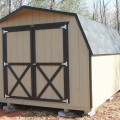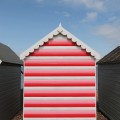Keeping our homes secure is important to our safety and well-being—and protects are personal belongings from theft or damage. We are keen about locking our doors and windows when we’re not home, and, often, invest in security systems. It’s just as important to protect our outbuildings. Here are some tips on how to keep your structures safe and secure, whether a shed, barn, playhouse, animal shelter or gazebo.
Lock Your Doors and Windows
Depending on what you keep in your shed, there could be a pretty penny worth of items inside, from expensive power tools to sports equipment. Make sure you have adequate, working locks on all doors and windows—this means bolted (not screwed) through the door and reinforced with a steel plate. If using padlocks, make sure they are the thicker kind. The ‘key’ part here is to make sure you lock the windows and doors after every use.
Mind Your Windows
In addition to locking your windows, there are a few other things you can do to protect your shed. For instances, make sure the windows are covered so that would-be burglars can’t be tempted by what they see inside. Also, you can install metal grills—or even chicken wire—on the inside of shed windows to prevent thieves from breaking in that way.
Install Outdoor Lighting
Lighting is a huge theft deterrent. Consider installing motion-detector security lights on your outdoor structures. This will spook burglars—and alert your (or neighbors) that something isn’t right.
Put in an Alarm
If you’re really concerned about the safety of your shed, consider installing a security system. There are less expensive alternatives to the high-tech, monitored solutions.
Our outdoor structures are an extension of home—and contain valuable items. We should give their protection the same consideration.

